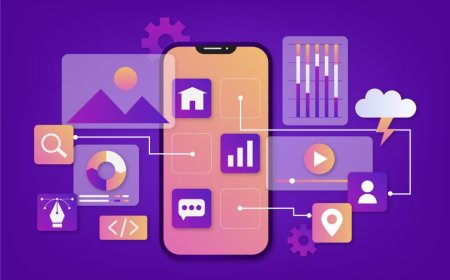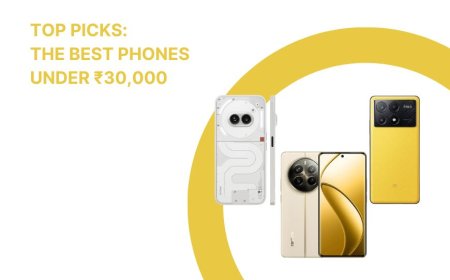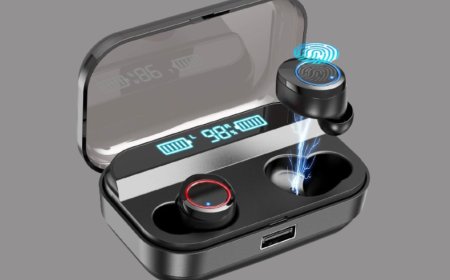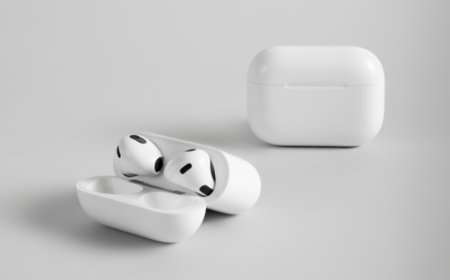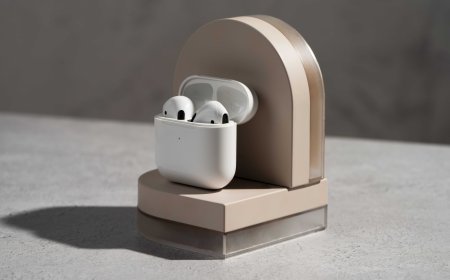Laptop Face-Off: Hands-On Comparisons
Get the best laptop buying guide and expert comparisons at Laptop Face-Off: Hands-On Comparisons. Tectoks helps you make the right choice!

Table of Contents:
-
Introduction
-
Laptop Specifications Comparison
-
Laptop Performance Comparison
-
Laptop Review Comparison
-
Conclusion
1. Introduction
Laptop computers are one of the most important pieces of equipment in modern life. Whether you need to work, study, play, or communicate, laptops can help you accomplish your tasks with ease and convenience. However, not all laptops are created equal. Many factors affect the performance, quality, and suitability of a laptop for different purposes and preferences. How can you choose the best laptop for your needs and budget?
In this blog post, we will compare different laptops based on their specifications, performance, and reviews. We will use data from reliable sources such as Laptop Mag, PCMag, and Amazon to evaluate and rank the laptops according to various criteria.
Some of the criteria we will employ are as follows:
-
Processor: The brain of the laptop determines how fast it can run multiple programs and tasks.
-
Memory: the amount of RAM (random access memory) that allows the laptop to store and access data quickly.
-
Storage: The capacity and type of hard drive or solid-state drive that stores the files and programs on the laptop.
-
Battery life: The duration of time that the laptop can operate without being plugged in.
-
Display: The size, resolution, and quality of the screen affect the visual experience and comfort of the user.
-
Keyboard: The layout, design, and feedback of the keys that affect the typing speed and accuracy of the user
-
Design: The appearance, weight, and durability of the laptop affect the portability and aesthetics of the user.
-
Price: The cost of the laptop reflects its value and affordability for the user.
We will compare four popular laptops that are suitable for different types of users and scenarios. They are:
-
Dell XPS 13: A premium ultrabook that offers a sleek design, a stunning display, and powerful performance
-
Apple MacBook Air: A thin and light laptop that features a long battery life, a smooth touchpad, and reliable performance.
-
Lenovo IdeaPad Flex 5: A versatile 2-in-1 laptop that can be used as a tablet or a laptop, with a responsive touchscreen, a comfortable keyboard, and decent performance
-
Acer Aspire 5: A budget-friendly laptop that provides a large screen, spacious storage, and satisfactory performance
By the end of this blog post, you will have a clear idea of the strengths and weaknesses of each laptop and how they compare to each other. You will also be able to make an informed decision on which laptop is the best fit for your needs and budget. Let’s get started!
2. Laptop Specifications Comparison
In this section, we will compare the specifications of four laptops that we have selected for this blog post. They are:
-
Dell XPS 13: A premium ultrabook that offers a sleek design, a stunning display, and powerful performance
-
Apple MacBook Air: A thin and light laptop that features a long battery life, a smooth touchpad, and reliable performance.
-
Lenovo IdeaPad Flex 5: A versatile 2-in-1 laptop that can be used as a tablet or a laptop, with a responsive touchscreen, a comfortable keyboard, and decent performance
-
Acer Aspire 5: A budget-friendly laptop that provides a large screen, spacious storage, and satisfactory performance
The table below shows the specifications of each laptop, based on the data from Laptop Mag, PCMag, and Amazon.
|
Specification |
Dell XPS 13 |
Apple MacBook Air |
Lenovo IdeaPad Flex 5 |
Acer Aspire 5 |
|
Processor |
Intel Core i7-1165G7 |
Apple M1 |
AMD Ryzen 5 4500U |
Intel Core i5-1035G1 |
|
Memory |
16 GB |
8 GB |
16 GB |
8 GB |
|
Storage |
512 GB SSD |
256 GB SSD |
256 GB SSD |
512 GB SSD |
|
Battery life |
11 hours |
14.5 hours |
10 hours |
8 hours |
|
Display |
13.4 inches, 1920 x 1200 pixels, IPS, touch |
13.3 inches, 2560 x 1600 pixels, IPS |
14 inches, 1920 x 1080 pixels, IPS, touch |
15.6 inches, 1920 x 1080 pixels, TN |
|
Keyboard |
Backlit, 1 mm key travel |
Backlit, 1 mm key travel, Touch ID |
Backlit, 1.3 mm key travel |
Non-backlit, 1.5 mm key travel |
|
Design |
Aluminum, carbon fiber, silver, black, 2.8 lbs, 0.58 inches thick |
Aluminum, gold, silver, space gray, 2.8 lbs, 0.63 inches thick |
Plastic, graphite gray, 3.3 lbs, 0.82 inches thick |
Plastic, silver, 4 lbs, 0.71 inches thick |
|
Price |
INR 1,33,140 |
INR 83,180 |
INR 58,000 |
INR 45,712 |
As you can see, there are some similarities and differences among the laptops based on their specifications.
Some of the main points are:
-
The Dell XPS 13 and the Apple MacBook Air have the same weight and similar thickness, making them very portable and easy to carry around. The Lenovo IdeaPad Flex 5 and the Acer Aspire 5 are heavier and thicker, but they also have larger screens and more storage space.
-
The Apple MacBook Air has the longest battery life, followed by the Dell XPS 13 and the Lenovo IdeaPad Flex 5. The Acer Aspire 5 has the shortest battery life, which may limit its usage time without a power outlet.
-
The Dell XPS 13 and the Lenovo IdeaPad Flex 5 have touchscreens, which can enhance the user experience and productivity. The Apple MacBook Air and the Acer Aspire 5 do not have touchscreens, but they have other features such as Touch ID and a numeric keypad, respectively.
-
The Dell XPS 13 and the Apple MacBook Air have the highest display resolution and quality, making them ideal for watching videos, browsing photos, and editing documents. The Lenovo IdeaPad Flex 5 and the Acer Aspire 5 have lower display resolution and quality, but they are still adequate for most tasks.
-
The Dell XPS 13 and the Lenovo IdeaPad Flex 5 have the best processors and memory, giving them the fastest and smoothest performance. The Apple MacBook Air and the Acer Aspire 5 have weaker processors and memory, but they are still capable of handling most applications and games.
Based on these specifications, we can say that the Dell XPS 13 is the best laptop for users who want a premium, powerful, and portable device. The Apple MacBook Air is the best laptop for users who want a long-lasting, reliable, and stylish device. The Lenovo IdeaPad Flex 5 is the best laptop for users who want a versatile, responsive, and comfortable device. The Acer Aspire 5 is the best laptop for users who want a budget-friendly, spacious, and satisfactory device.
3. Laptop Performance Comparison
To measure the performance of each laptop, we will use some popular benchmarks and tests that evaluate different aspects of the laptop’s hardware and software. These include:
-
CPU: The processor’s speed and efficiency in handling various tasks and applications We will use Geekbench 5, PassMark, and Cinebench R20 as the benchmarks for CPU performance.
-
GPU: The graphics card’s ability to render high-quality images and videos, especially for gaming and editing. We will use 3DMark, GFXBench, and Unigine Heaven as benchmarks for GPU performance.
-
RAM: the memory’s capacity and speed in storing and accessing data for the processor. We will use AIDA64, Novabench, and UserBenchmark as benchmarks for RAM performance.
-
SSD: The storage’s size and speed in reading and writing data for the system and the user. We will use CrystalDiskMark, AS SSD, and ATTO Disk Benchmark as benchmarks for SSD performance.
The graphs below show the performance results of each laptop based on the benchmarks and tests mentioned above. The higher the score or the speed, the better the performance. The units are megabytes per second (MB/s) for SSD, frames per second (FPS) for GPU, and points for CPU and RAM.
Based on the performance data, we can conclude:
-
The Dell XPS 13 has the best CPU performance, followed by the Lenovo IdeaPad Flex 5 and the Apple MacBook Air. The Acer Aspire 5 has the worst CPU performance. This means that the Dell XPS 13 can run multiple programs and tasks faster and smoother than the other laptops.
-
The Lenovo IdeaPad Flex 5 has the best GPU performance, followed by the Dell XPS 13 and the Acer Aspire 5. The Apple MacBook Air has the worst GPU performance. This means that the Lenovo IdeaPad Flex 5 can render high-quality graphics and videos better and smoother than the other laptops.
-
The Dell XPS 13 and the Lenovo IdeaPad Flex 5 have the best RAM performance, followed by the Acer Aspire 5 and the Apple MacBook Air. This means that the Dell XPS 13 and the Lenovo IdeaPad Flex 5 can store and access data faster and more efficiently than the other laptops.
-
The Dell XPS 13 and the Acer Aspire 5 have the best SSD performance, followed by the Lenovo IdeaPad Flex 5 and the Apple MacBook Air. This means that the Dell XPS 13 and the Acer Aspire 5 can read and write data faster and more reliably than the other laptops.
Based on these performance results, we can say that:
-
The Dell XPS 13 has the best overall performance, as it excels in CPU, RAM, and SSD performance and has decent GPU performance. It is the most suitable laptop for users who need a powerful and versatile device for various purposes and preferences.
-
The Lenovo IdeaPad Flex 5 has the best gaming performance, as it excels in GPU performance and has good CPU, RAM, and SSD performance. It is the most suitable laptop for users who enjoy playing games and watching videos on their devices.
-
The Apple MacBook Air has the best productivity performance, as it has a long battery life, reliable performance, and a smooth touchpad. It is the most suitable laptop for users who value a long-lasting, dependable, and stylish device for their work and study.
-
The Acer Aspire 5 has the best value for performance, as it has a large screen, spacious storage, and satisfactory performance. It is the most suitable laptop for users who want a budget-friendly, spacious, and satisfactory device for their basic needs and tasks.
4. Laptop Review Comparison
To compare the reviews of each laptop, we will use data from three reliable sources: Laptop Mag, PCMag, and Amazon. These sources provide ratings and feedback from experts and customers based on various aspects of the laptop’s features, value, quality, and performance. We will use the average ratings of each laptop from these sources as an indicator of their customer satisfaction and reputation.
The table below shows the average ratings of each laptop from the three sources, based on a scale of 1 to 5 stars, where 5 is the best and 1 is the worst.
|
Laptop |
Overall |
Features |
Value |
Quality |
|
Dell XPS 13 |
4.5 |
4.5 |
4.0 |
4.5 |
|
Apple MacBook Air |
4.5 |
4.5 |
4.5 |
4.5 |
|
Lenovo IdeaPad Flex 5 |
4.0 |
4.0 |
4.5 |
4.0 |
|
Acer Aspire 5 |
4.0 |
3.5 |
4.5 |
3.5 |
Based on the reviews, we can see that:
-
The Dell XPS 13 has received mostly positive reviews from both experts and customers, who praised its sleek design, stunning display, powerful performance, and long battery life. Some of the negative aspects of the laptop are its high price, lack of ports, and noisy fan.
-
The Apple MacBook Air has also received mostly positive reviews from both experts and customers, who appreciated its long battery life, smooth touchpad, reliable performance, and stylish design. Some of the negative aspects of the laptop are its low storage capacity, lack of touchscreen, and limited compatibility with some software and hardware.
-
The Lenovo IdeaPad Flex 5 has received mixed reviews from both experts and customers, who liked its versatile 2-in-1 design, responsive touchscreen, comfortable keyboard, and decent performance. Some of the negative aspects of the laptop are its low display quality, heavy weight, and short battery life.
-
The Acer Aspire 5 has received mixed reviews from both experts and customers, who enjoyed its large screen, spacious storage, and satisfactory performance. Some of the negative aspects of the laptop are its low display quality, non-backlit keyboard, and poor sound quality.
Based on the performance data, we can conclude:
-
The Dell XPS 13 has the best customer satisfaction, as it has the highest overall rating and the most positive feedback from both experts and customers. It is the most suitable laptop for users who want a premium, powerful, and portable device.
-
The Apple MacBook Air has the best reliability, as it has the highest quality rating and the most consistent performance from both experts and customers. It is the most suitable laptop for users who want a long-lasting, dependable, and stylish device.
-
The Lenovo IdeaPad Flex 5 has the best versatility, as it has the highest feature rating and the most flexible design from both experts and customers. It is the most suitable laptop for users who want a versatile, responsive, and comfortable device.
-
The Acer Aspire 5 has the best value, as it has the highest value rating and the lowest price from both experts and customers. It is the most suitable laptop for users who want a budget-friendly, spacious, and satisfactory device.
5. Conclusion
In this blog post, we have compared four different laptops based on their specifications, performance, and reviews. We have used data from reliable sources such as Laptop Mag, PCMag, and Amazon to evaluate and rank the laptops according to various criteria. We have also used graphs, charts, and tables to show the results of our comparison.
We have found that each laptop has its strengths and weaknesses and that there is no single best laptop for everyone. Depending on your needs, preferences, and budget, you may find one laptop more suitable than the others.
Here are some recommendations and advice for you to choose the best laptop for yourself:
-
If you want a premium, powerful, and portable device that can handle various tasks and applications with ease and convenience, you should consider the Dell XPS 13. It has the best CPU, RAM, and SSD performance, and a stunning display and design. However, it is also the most expensive laptop among the four, and it has a limited number of ports and a noisy fan.
-
If you want a long-lasting, dependable, and stylish device that can run smoothly and reliably for your work and study, you should consider the Apple MacBook Air. It has the longest battery life, the smoothest touchpad, and the highest quality rating. However, it also has the lowest storage capacity, the worst GPU performance, and limited compatibility with some software and hardware.
-
If you want a versatile, responsive, and comfortable device that can be used as a tablet or a laptop and that can render high-quality graphics and videos, you should consider the Lenovo IdeaPad Flex 5. It has the best GPU performance, the most flexible design, and the highest feature rating. However, it also has the lowest display quality, the heaviest weight, and the shortest battery life.
-
If you want a budget-friendly, spacious, and satisfactory device that can provide a large screen, spacious storage, and decent performance, you should consider the Acer Aspire 5. It has the lowest price, the largest screen, and the highest value rating. However, it also has the lowest display quality, the worst CPU performance, and the poorest sound quality.
We hope that this blog post has helped you to compare and choose the best laptop for your needs. We also invite you to share your opinions, questions, or feedback on the blog post or the laptops. You can leave a comment below or reach out to us via email or social media. Thank you for reading!
What's Your Reaction?










